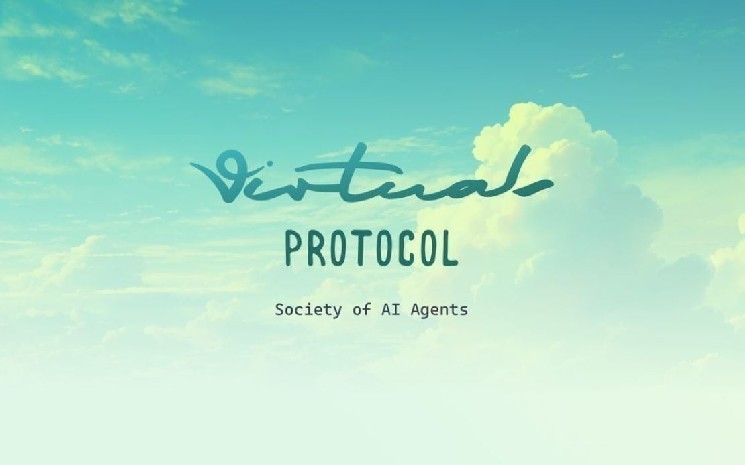- EVA introduces contextual identity for AI agents with memory, meaning, and emotion stored entirely on-chain.
- Virtuals Protocol enables AI agents to evolve with blockchain-based memory and co-ownership governance.
EVA is now live on Virtuals Protocol. This project is not just a digital experiment or an ordinary AI character, but a virtual agent with a contextual identity that can store memories, react emotionally, and all recorded directly on the blockchain. The concept is quite ambitious: combining AI, emotions, and identity in one digital body that can be owned together through tokens.
Furthermore, EVA does not only appear as an AI character that can be chatted with. She was created to live in an on-chain environment. That means, every interaction, decision, or even “emotion” shown by EVA—for example when receiving commands or responding to users—can all be tracked and verified publicly.
Not only that, EVA is also part of a growing group of AI agents under the Virtuals ecosystem. Each agent, including EVA, has one billion tokens that can be owned by anyone, providing space for public participation in determining the direction of its development.
EVA is now live on Virtuals Protocol.
Contextual identity for AI agents. Memory, meaning, and emotion, onchain. https://t.co/z0i2YV2Hvo— Virtuals Protocol (@virtuals_io) July 4, 2025
EVA Has Memories and Emotions Like Humans
If you imagine EVA is just a cool-looking chatbot, well… maybe you need to revise your image. EVA is built with a more complex approach: it has a memory of previous interactions, can interpret context, and even create emotional relationships digitally, like humans. Not in the sense of “AI feels love,” of course, but EVA can form preferences, store experiences, and adjust responses based on its life “history” on the blockchain.
On the other hand, two weeks before EVA launched, Virtuals Protocol introduced an automatic verified badge system for Genesis agents, to distinguish between real and fake characters. This is important, considering that the AI agents on this protocol are starting to grow in number and can be used carelessly.
On the other hand, the launch of EVA seems to be part of Virtuals Protocol’s big strategy this year. A few weeks earlier, they launched a new feature called Backroom, an AI-based protocol that is tasked with turning raw data into insights that can be traded by the crypto community.
Users who hold Key tokens from each Room in the Backroom ecosystem can get exclusive access to curated insights. Interesting? Sure. It’s like having a Bloomberg Terminal, but controlled by AI and open to anyone.
Virtuals Protocol’s ACP Beta Hints at a New Kind of Autonomy
However, EVA’s story doesn’t stop at contextual identity. CNF recently reported that Virtuals Protocol has also launched its ACP Public Beta—a system that allows AI agents to collaborate and transact on-chain using open standards.
What’s the point? Imagine a few EVA agents like mini hedge funds that can analyze markets, make decisions, and execute transactions without human intervention. Or a group of news agencies that compile reports based on live data streams from blockchains and social media. Sounds like the future? Maybe.
In that sense, EVA is just the beginning. But it’s an interesting beginning. It opens the door to imagining what “digital personalities” might look like, especially when they’re tied to token economics, shared ownership, and social interaction.
Meanwhile, as of press time, VIRTUAL is changing hands at about $1.58, up 2.29% over the last 24 hours, and driving its market cap to surpass the $1 billion mark.
